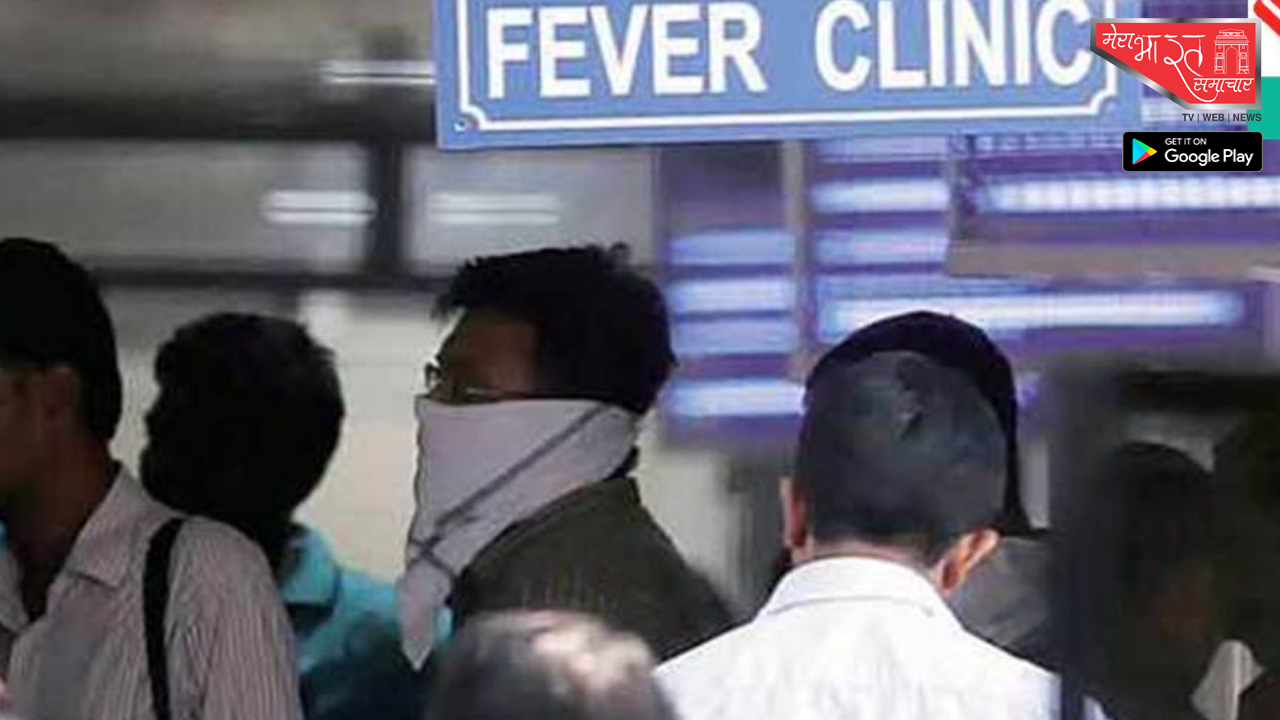The effectiveness of antibiotics for typhoid fever is threatened by the emergence of resistant strains, according to a large genome sequencing study of the bacteria Salmonella Typhi published in The Lancet Microbe.
Typhoid fever causes 11 million infections and more than 100,000 deaths per year. South Asia accounts for 70% of the global disease burden.
Since 2000, multi-drug-resistant (MDR) S Typhi has declined steadily in Bangladesh and India, remained low in Nepal, and increased slightly in Pakistan. However, these are being replaced by strains resistant to other antibiotics, according to the study conducted by researchers from Stanford University, Christian Medical College Vellore and other institutions. The genome analysis also reveals that resistant strains – almost all originating in South Asia – have spread to other countries 197 times since 1990.
The study sequenced 3,489 S Typhi isolates from 2014-19 from people in Bangladesh, India, Nepal, and Pakistan, and 4,169 samples isolated from over 70 countries during 1905-2018. Strains were classified as MDR if they had genes giving resistance to antibiotics ampicillin, chloramphenicol, and trimethoprim/ sulfamethoxazole.
“In recent years, we have seen increasingly resistant strains that are threatening to leave us without effective antibiotics against this bacterium. We are already seeing strains for which there is only a single oral antibiotic remaining, termed XDR typhoid. Strains resistant to the antibiotic (azithromycin) have been seen in India, Bangladesh, Nepal and Pakistan… Evidence to date suggests that much of the drug-resistance in typhoid has evolved within India, so we certainly need to be concerned about the appearance of drug resistance in the country,” lead author Dr Jason Andrews of Stanford University told The Indian Express.
Written by Anuradha Mascarenhas | New Delhi |
Updated: June 22, 2022 11:43:50 am
Since 2000, multi-drug-resistant (MDR) S Typhi has declined steadily in Bangladesh and India, remained low in Nepal, and increased slightly in Pakistan. (File)
The effectiveness of antibiotics for typhoid fever is threatened by the emergence of resistant strains, according to a large genome sequencing study of the bacteria Salmonella Typhi published in The Lancet Microbe.
Typhoid fever causes 11 million infections and more than 100,000 deaths per year. South Asia accounts for 70% of the global disease burden.
Best of Explained
ExplainSpeaking: The point of interest rate hikes
India’s emerging twin deficit problem
Why Israel is headed to its 5th election in 3 years
CLICK HERE FOR MORE
Since 2000, multi-drug-resistant (MDR) S Typhi has declined steadily in Bangladesh and India, remained low in Nepal, and increased slightly in Pakistan. However, these are being replaced by strains resistant to other antibiotics, according to the study conducted by researchers from Stanford University, Christian Medical College Vellore and other institutions. The genome analysis also reveals that resistant strains – almost all originating in South Asia – have spread to other countries 197 times since 1990.
The study sequenced 3,489 S Typhi isolates from 2014-19 from people in Bangladesh, India, Nepal, and Pakistan, and 4,169 samples isolated from over 70 countries during 1905-2018. Strains were classified as MDR if they had genes giving resistance to antibiotics ampicillin, chloramphenicol, and trimethoprim/ sulfamethoxazole.
BEST OF EXPRESS PREMIUM
Out of touch with MLAs, lacklustre in administration, how Uddhav Thackera…Premium
Out of touch with MLAs, lacklustre in administration, how Uddhav Thackera…
Rajeswari Sengupta writes: Why the communication gap between the MPC and …Premium
Rajeswari Sengupta writes: Why the communication gap between the MPC and …
In Rampur, BJP and SP gear up for Lok Sabha bypoll in Azam Khan’s s…Premium
In Rampur, BJP and SP gear up for Lok Sabha bypoll in Azam Khan’s s…
UPSC Key-June 21, 2022: Know the relevance of ‘Education in India’ to ‘Hi…Premium
UPSC Key-June 21, 2022: Know the relevance of ‘Education in India’ to ‘Hi…
More Premium Stories >>
“In recent years, we have seen increasingly resistant strains that are threatening to leave us without effective antibiotics against this bacterium. We are already seeing strains for which there is only a single oral antibiotic remaining, termed XDR typhoid. Strains resistant to the antibiotic (azithromycin) have been seen in India, Bangladesh, Nepal and Pakistan… Evidence to date suggests that much of the drug-resistance in typhoid has evolved within India, so we certainly need to be concerned about the appearance of drug resistance in the country,” lead author Dr Jason Andrews of Stanford University told The Indian Express.
MUMBAI NEWS
1Uddhav Thackeray’s top quotes: ‘A blow by the own is what would hurt the most’
2Will resign if rebel MLAs come forward and demand: Uddhav Thackeray amid political crisis in Maharashtra
3Maharashtra: Another Sena MLA urges Uddhav to form govt with BJP
More from Mumbai
India’s Health Ministry is considering introducing new typhoid conjugate vaccines into the national immunisation program. Two WHO-prequalified vaccines have been developed in India (by Bharat Biotech and Biological E). Study author Prof Jacob John of CMC Vellore said surveillance at 18 Indian sites during 2016-20 found typhoid was as common as it was two decades ago, especially in urban areas. “Complications and deaths are not common… However if transmission still prevails and resistance develops to commonly used antibiotics, then it is likely that there will be an upsurge in severe disease,” Prof John told The Indian Express.











